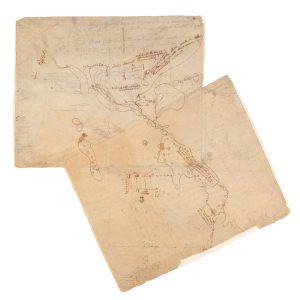
People & Culture
Safety first, service always: The Canadian Coast Guard turns 60
A celebration of the Canadian Coast Guard’s renowned search-and-rescue capabilities — and more — as the special operating agency turns 60
- 4392 words
- 18 minutes
Travel
Neil Ever Osborne gets into the line of fire at the 2017 Taiwan Lantern Festival

This story was originally published in the September 2017 issue of Canadian Geographic
As the February dusk falls on Tainan City, the streets of Yanshuei District fill with people. Dressed as if for a day of winter sports in heavy jackets, gloves, and scarves, their faces masked by motorcycle helmets with the visors pulled down, they cluster around elaborate palanquins containing statues of a seated warrior and draped with strings of firecrackers. A blast of flame from a blowtorch, and one of the litters explodes, sending rockets screaming into the air and the crowds. But instead of rushing away from the erupting palanquin, the spectators raise their armoured heads and hands to the shower of sparks. For this is no ordinary fireworks display; this is the Yanshuei ‘Beehive’ Fireworks festival, where to bathe in falling embers is thought to ensure good luck and good health in the new year — and to actually be hit by a rocket is luckiest of all.
Legend has it that in the late 19th century, Yanshuei was gripped by a cholera epidemic. With the death toll mounting daily (and without the benefit of our modern understanding of the importance of sanitation in controlling the disease), the terrified locals invoked the deity Guan Di, an ancient general believed to have the power to exorcise demons. At the lunar new year, they paraded through the city with palanquins bearing the likeness of Guan Di, and ignited firecrackers on the roadside to light his way. The epidemic eased soon afterward, and since then, the citizens of Yanshuei have welcomed each new year with an ear-splitting display of firepower pleasing to the warlike Guan Di.
Today, this literal baptism of fire is one of the largest folk celebrations in the world, attracting spectators from across Taiwan and beyond who come to rush the ‘beehive’ palanquins, so-called because of the buzzing sound of the thousands of rockets going off at once. It coincides with the Taiwan Lantern Festival, a countrywide new year celebration held annually on the 15th day of the first lunar month, which usually falls between late January and mid-February. The focal point of that festival is the release of paper lanterns, which carry the wishes of the people to the deities, minus the pyrotechnics.
Neil Ever Osborne travelled to various cities across Taiwan during 2017’s lantern festival to see how their locals ring in the new year — occasionally putting himself right in the line of fire.











Are you passionate about Canadian geography?
You can support Canadian Geographic in 3 ways:

People & Culture
A celebration of the Canadian Coast Guard’s renowned search-and-rescue capabilities — and more — as the special operating agency turns 60

People & Culture
For generations, hunting, and the deep connection to the land it creates, has been a mainstay of Inuit culture. As the coastline changes rapidly—reshaping the marine landscape and jeopardizing the hunt—Inuit youth are charting ways to preserve the hunt, and their identity.

People & Culture
*It means “awake” in Beothuk, the language and people who once called present-day Newfoundland home for about 2,000 years. One young woman, believed to be the last living Beothuk, left a collection of maps and art that help us understand her people’s story.

People & Culture
The story of how a critically endangered Indigenous language can be saved